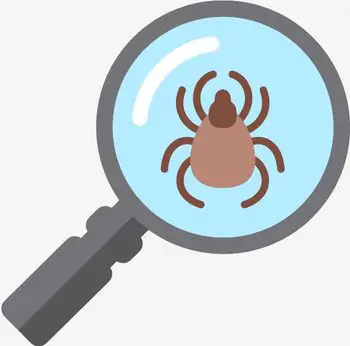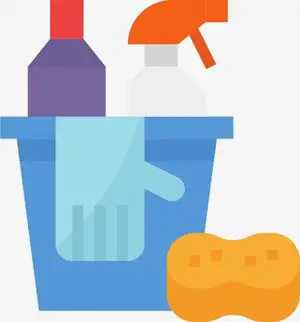Quick Answer: What to Do if a House Rabbit Has Fleas?
Get a flea comb and start combing through the rabbit’s fur, being sure to get down to the skin. Fleas will be visible as tiny black specs moving around on the fur or in the comb.
If you find any fleas, dip the comb into a bowl of soapy water and continue combing. When you’re finished, dispose of the fleas by submerging them in soapy water and flushing them down the toilet.
Long description of this topic below
Introduction: What to Do if a House Rabbit Has Fleas?
There is a myth that big animals like cats, dogs, and other wild creatures get flea diseases. But unfortunately, pet rabbits, rats, guinea pigs, and humans too can be infected by this parasite.
This blog post offers extensive information on flea infestation in indoor rabbits. After reading the entire post, you will know:
How do domestic rabbits get flea infections?
Rabbit flea treatment and care
Things to avoid when a pet rabbit has flea disease
Ways to prevent flea attacks on bunnies
How Pet Rabbits Get Fleas
Before discussing several care measures to cure fleas in rabbits, let’s explore how rabbits get it.
A flea is a kind of insect that nests in a hot-blooded animal body. Unlike other small insects, fleas can’t fly. They travel from one body to another by jumping long distances. Here are some possible ways your bunny can get fleas:
Playing in the garden in spring and summer
Get in contact with other flea-infected pets
Living with cats and dogs in the same house
Carrying fleas in your shoes
Through windows alongside the backyard or garden
Besides treating fleas on bunnies, it is crucial to keep the house clean every time. Generally, fleas lay eggs on the carrier host (rats or moles in the garden). Due to the slick texture, the eggs often fall on the carpets, upholsteries, curtains, and even in the floor cracks. However, the eggs can survive in these places until hatching. Damp and warm areas are ideal for flea growth.
Thus, you need to clean the deepest and darkest corners and crevices of your house, as flea eggs gravitate there and survive on human debris and waste.
Rabbits Flea Treatments that are Safe and Effective
Once you observe the symptoms of flea infection on your bunny, consult a vet for proper treatment. However, there is no specific medication for bunnies infested by fleas. The medicines provided to cats and dogs are used for rabbits also. Thus, give such off-label drugs to your tiny furry friend under the guidance of a veterinarian.
Apart from giving medicines, here are the care measures you must follow to get rid of fleas on indoor rabbits.
1. Brush Rabbit’s Coat with a Flea Comb

Flea combs are specifically made to eliminate fleas and mites from the animals’ coats. The distance between the tines of this comb is lesser than usual combs. Thus, it can pull these small insects from your pets’ fur.
This grooming tool is generally made of stainless steel. Run the comb over your bunny thoroughly but gently. Otherwise, the spikes may hurt your smallest family member. Don’t forget to comb their ears and legs where fleas tend to hide.
Regular scouring with a flea comb can also prevent these insects from growing in animals’ bodies. Though following this process won’t eliminate fleas completely, it works wonders if there are a few insects.
Once fleas come out, drown them in alcohol or hot water. Normal temperature water won’t work as they can survive in water too. However, adding soap or detergent to regular water can give you the same result as alcohol.
2. Topical Solutions
Using topical solutions on rabbits is the most effective way to get rid of fleas fast. Since there is no rabbit-specific medication for treating fleas, it is vital to consult a vet for proper dosing. Nevertheless, if your pet is too young, it is better to opt for another way to treat fleas to avoid further health issues.
You may apply any of the following solutions to house rabbits as per the veterinarian’s instructions:
Imidacloprid (Advantage)
Ivermectin (Xeno 450)
Selamectin (Revolution)
These gel or lotion-based solutions are easy to apply and for external use only. Smear the gel on the back of the bunny so that it can’t lick the ointment. Consuming topical lotion may lead to stomach problems. If you have more than one rabbit in the house, you need to keep them in different places during the entire treatment phase. Give them enchanting rabbit toys so that they don’t feel bored.
Strictly avoid medications containing fipronil, such as Frontline and Sentinel. Though these solutions work great for cats and dogs, they can make your little furry friend sick and sometimes cause death.
3. Apply Diatomaceous Earth (DE)
Have you ever heard of diatomaceous earth? It gives miraculous results in killing fleas.
The tiny particles of DE pass through the exoskeleton of fleas and absorb moisture from their body until they perish. It hardly takes four hours to kill fleas and their larva. But it is not that effective in destroying flea eggs.
Wait. Before rushing to the store to get it, look at the precautions to follow for safe application.
Always use food-grade diatomaceous earth. It is non-toxic and safe for small and frail animals.
Diatomaceous earth should be applied to clean and dry areas. Give a bath to your bunny and dry them perfectly before using this powder on them.
- Take one teaspoon of DE and dust on your bunny’s back. Apply it to their tail, chest, and neck too. Don’t put it on their face to avoid contact with the eyes and nose.
Cover your bunny with clothes to desist DE from becoming airborne, as inhalation of it may harm their lungs.
Repeat this process for four consecutive days to get rid of fleas completely.
You may also dust the powder on carpets, floors, mats, etc.
Vacuum the dusted areas after a few hours and empty the dust bag.
- Wear a pair of gloves to prevent your hands from getting dry.
Diatomaceous earth works only in a dry environment. It won’t work at all if the application area is wet or humid. Also, don’t dilute in water to make a spray. Use it as dry powder.
4. Use Apple Cider Vinegar
The safest way to get rid of fleas on your house rabbits is apple cider vinegar. But there are some limitations to this process.
Though there is no harm in using this vinegar on rabbits, it can’t kill the insect. Apple cider vinegar only acts as a powerful flea repellent. When you apply it to your pet’s fur, the smell and taste become unbearable for fleas and mites. Thus, you need to repeat this process on alternative days to maintain the effect and keep fleas at bay forever.
Mix apple cider vinegar with water in a 1:1 ratio to make an effective solution for fleas. Pour the mixture into a spray bottle and directly apply it to your bunny’s coat. Massage it all over the body and wait for at least 20 minutes. Now, brush their fur with a flea comb to extract insects from their coat.
Boons of apple cider vinegar are not limited to repelling fleas. It can give a boost to your bunny’s health too. You may add one tablespoon of this edible vinegar to one gallon of their potables. If your pet doesn’t like the taste and stops drinking water, provide them regular water as usual without mixing ACV. It is more important to keep them hydrated.
Flea Treatments that You Never Should Try on Rabbits
Flea Collar
A flea collar may be an ideal solution for repelling fleas in the case of canine pets. But the chemicals present in the collar can be dangerous for rabbits.
Flea Bath
Bunnies don’t enjoy bathing. The stress of a dip or bath is more harmful to them than fleas. Again, chemicals in flea shampoos and several dips are not at all suitable for them.
Flea Powder
Most flea powders contain ingredients like pennyroyal, peppermint, eucalyptus, and pyrethrum which are poisonous to bunnies. However, there are powders with rabbit-safe components. But rabbits can get sick if they lick this powder.
How to Prevent Fleas Infestation in Pet Rabbits
Treating your house rabbit is not enough to prevent him from flea infestation further. You need to eliminate fleas and their eggs altogether from your home. Here are the additional steps to follow to stop their reproduction.
1. Intensively Clean Your Home

Fleas tend to multiply fast. Even if you give the best care to your bunny and forget to clean the house, there are high chances of re-infestation.
Vacuum each and every corner of the house. You may spread borax powder or food-grade diatomaceous earth on the carpets and floors. Keep it to work for 30 minutes and vacuum the area thoroughly.
For the garden and backyard, use flea bombs or sprays. Make sure you keep your bunny out of those areas for more than 24 hours.
2. Treat All Pets Together
If you have other animals in your house, like cats, dogs, or guinea pigs, continue treating them simultaneously. If one of your pets is infested, it will spread among the others quickly.
The Bottomline
Treating fleas on house bunnies won’t be toilsome if it’s discovered earlier. Keep watching your pet, and if you notice it itching or biting the skin more frequently, it’s a sign that your rabbit may have fleas.
You can extract these insects from their fur using a flea comb. If you find one, take your rabbit to the vet immediately to start the treatment.




